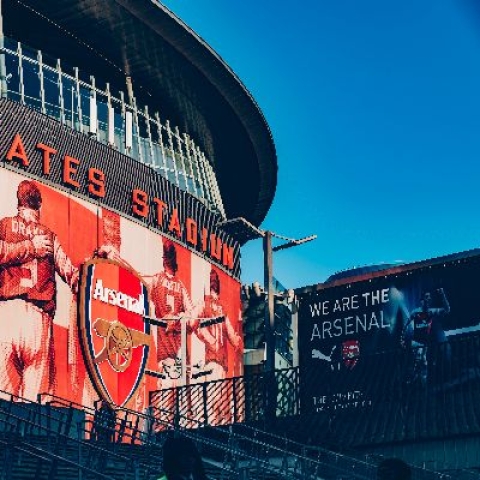

Investment is needed at every level
A long-awaited official review of women’s football in England sets out ten recommendations designed to transform and develop the sport at every level. The review, which was chaired by former international player Karen Carney, covers everything from playing standards to diversity goals and equal access to sports for girls.
As a whole, its aim is to create a better version of the sport that exists now, with more women and girls playing better football in a healthier environment, and more people watching and enjoying it.
These kind of changes will come at a price. But Carney predicts it will be a price worth paying, and could turn women’s football in England into a “billion pound industry”.
Those costs though are considerable (and something I looked at as an adviser to the review on finances). Even at the grassroots level of women’s football, building and maintaining good quality pitches and changing rooms is an expensive undertaking.
Then at the top level of English football, the report lists some of the costs that will be required in the Women’s Super League (WSL) (the equivalent to the men’s Premier League) and the Women’s Championship to raise standards and encourage more girls to get involved. These include a salary floor for players, mental and physical health provisions, and dedicated marketing resources.
For each WSL club, those costs are estimated at an extra annual spend of £441,000. Yet according to publicly available accounts, the average income for those clubs was £1.9m last year. For some it was as low as £101,000. So where will they find the money?
The good news is that there are plenty of signs of growing income in the women’s game. And the review’s recommendations around professionalism, broadcasting, and fan engagement will help to use that extra income effectively.
As with the men’s game, football income tends to come from three main sources: match-day (tickets and hospitality), commercial (sponsorship), and broadcasting. Match-day is already growing, and the 2022-23 season has seen record attendance for the WSL, Women’s Champions League, and the Women’s FA Cup.
But maintaining this level of interest itself costs money, because healthy match-day attendance comes from good fan engagement. Better stadiums, dedicated marketing teams, and “support liaison officers” to engage with fans are all recommended in the review.
It also encourages women’s teams affiliated with men’s Premier League sides to play in the club’s main stadium. Arsenal’s women’s team for example, currently play some of their matches at the Emirates, which seats 60,704 spectators, and some at Meadow Park, which holds 4,500.
Not all matches can be held in huge stadiums though, as running costs are high and a full stadium is widely considered to be more atmospheric. But the grander facilities tend to have better facilities for fans, are more accessible by public transport and encourage club supporters to watch the women’s teams.
This is where the recommended marketing teams come in, because big stadiums require large crowds to be effective, and people need to know about upcoming matches if they are going to consider buying tickets.
Other fans who choose to watch at home are behind one of the other big sources of football income: broadcasting. The current deal for the WSL was a groundbreaking one in terms of coverage (up to 66 matches) and income (£8 million a year). But more will be required to cover the costs recommended in the review.
Show me the money
The issue here was highlighted in the recent dispute between Fifa and broadcasters over showing the 2023 Women’s World Cup. Even broadcasters in European countries with strong support for women’s football were offering less than 10% of what they were willing to pay to show the men’s World Cup.
This was despite encouraging signs for televising games. There was a 9% increase in WSL viewership in 2022-23 compared to the previous season – a strong rise given that some of it is only available on subscription TV. And streaming service DAZN reported a 42% increase in viewership for women’s Champion’s League matches.
Commercial income is the third area where the money can grow. Sponsorship income is up and there is evidence of positive impact on brands, such as Barclay’s title sponsorship of the WSL and the Women’s Championship and the online beauty brand Il Makiage’s association with Arsenal. This should encourage more brands to invest in women’s football.
The review also addresses the lack of diversity across the women’s game, where research shows that off-pitch roles (club directors for example) are predominantly held by men, and that a number of WSL and Women’s Championship club boards (the decision makers) are male only.
This is especially important as affiliated teams now make up most of the top two tiers of English women’s football. Research shows that greater diversity is linked to better finances, so addressing this imbalance should also help with money.
Because ultimately money is what women’s football – not just in England – badly needs. The review has good ideas for raising standards, improving participation, and attracting more fans. But all of them depend on two urgent goals: investment and faith in the future of the sport.
Christina Philippou is the Director of Postgraduate Courses in the Accounting and Financial Management subject group at Portsmouth Business School in the Faculty of Business and Law.
This article is republished from The Conversation under a Creative Commons Licence. Read the original article.
More The Conversation Articles...
The Conversation is an independent source of news analysis and informed comment written by academic experts, working with professional journalists who help share their knowledge with the world.
Treat culture: why indulging in small, affordable pleasures can help you cope with tough times
Jason Sit
14 July 2023
3 min read

Rising sexual violence in Sudan conflict reflects entrenched patriarchy – but women and girls are fighting back
Tamsin Bradley
11 July 2023
4 min read

Why Arsenal paid so much for Declan Rice: a strategy focusing on mid-20s, home-grown talent
Sarthak Mondal
11 July 2023
6 min read

